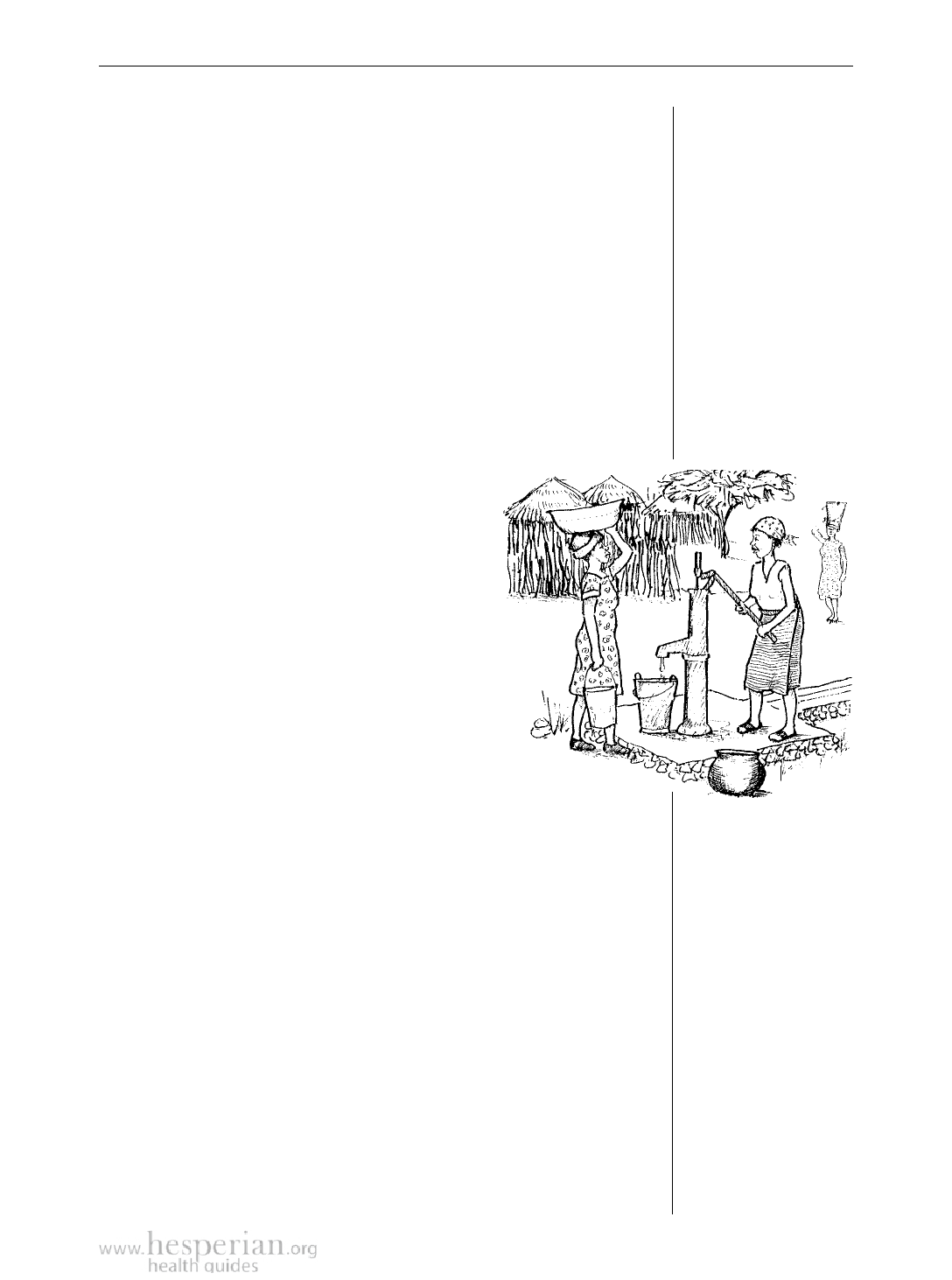
Cleanliness 151
What could have prevented the family’s illness?
If the family had used any of these precautions, the spread of
illness could have been prevented:
• if the man had used a latrine or toilet.
• if the pig had not been allowed to run free.
• if the mother had not used her skirt to wipe the child’s
hands and then touch the food.
• if the mother had washed her hands after touching her
child and before preparing food.
Cleanliness in the community (sanitation)
Many common health problems are best solved in the
community. When the community works together to
improve sanitation, everybody benefits.
For example:
Work together to develop a source
of clean water for drinking and cooking.
The source should be close enough to the
community for people to get water easily.
To keep drinking and cooking water clean:
• do not let animals go near the water
source. If necessary, build a fence to keep
them out.
• do not bathe, or wash clothes, cooking
pots, or eating utensils near the water
source.
• do not pass stool or throw garbage
(rubbish) near the water source.
Clean drinking water
can help prevent
diarrhea and parasites.
Get rid of garbage in a safe way. If possible, bury,
compost, or burn garbage. If you bury it, make sure the
pit is deep enough to keep animals and bugs away. If the
garbage is above ground, fence off the dump and cover the
garbage with dirt to reduce flies. Also, find safe ways to get
rid of dangerous and toxic materials. For example, do not
burn plastic, because the fumes can be toxic, especially to
children, old people, and sick people.
Drain standing water in washing areas, and in puddles,
tires, and open containers. Malaria and dengue fever are
spread by mosquitos, which breed in water that is not
flowing. If possible, use mosquito nets when sleeping.
Organize your community to build latrines (see the
next page for how to build a latrine).
➤ Use composted
food waste to fertilize
your crops.
Where Women Have No Doctor 2012